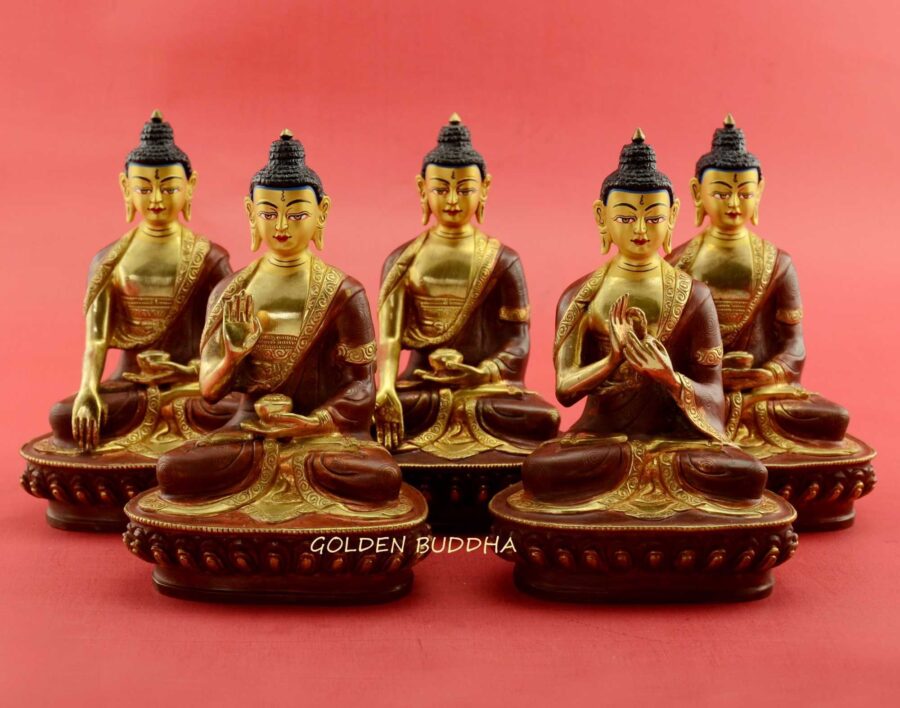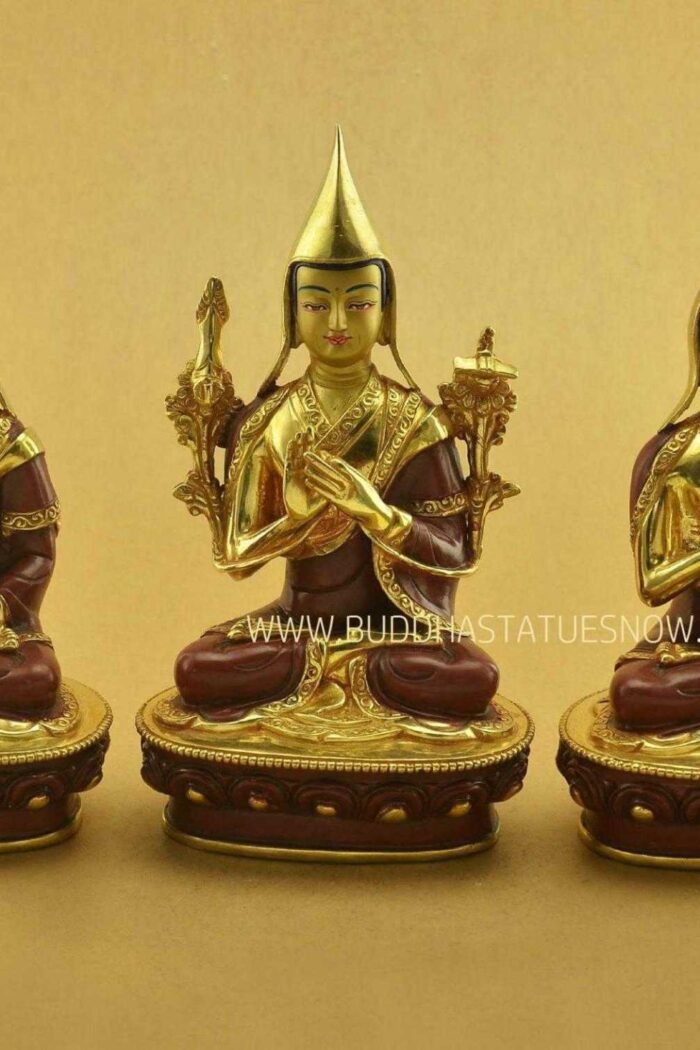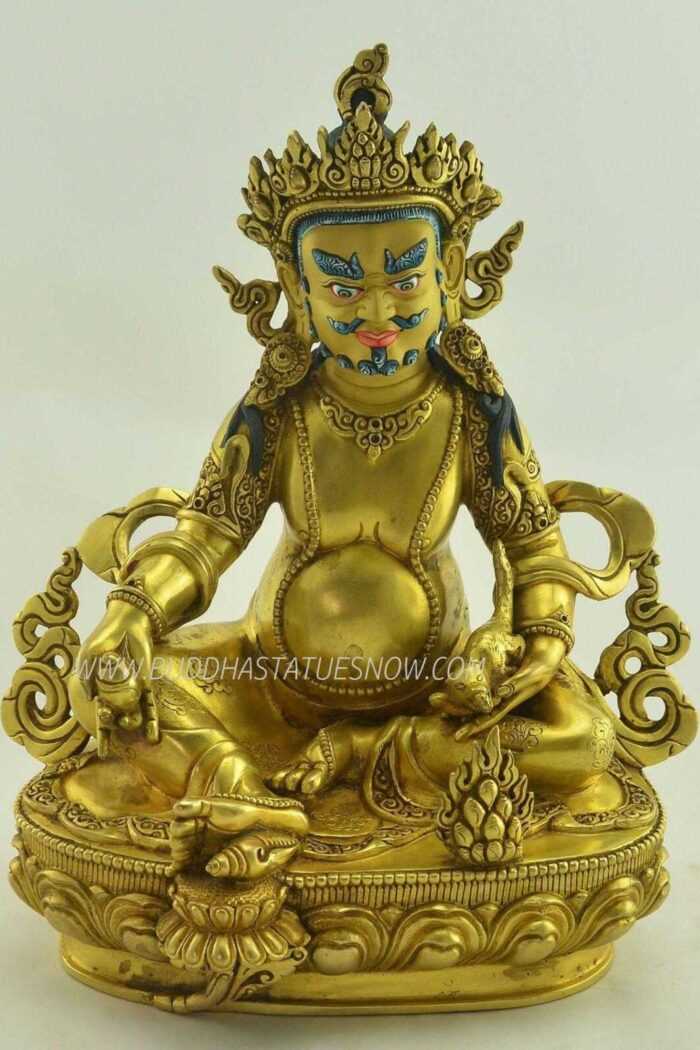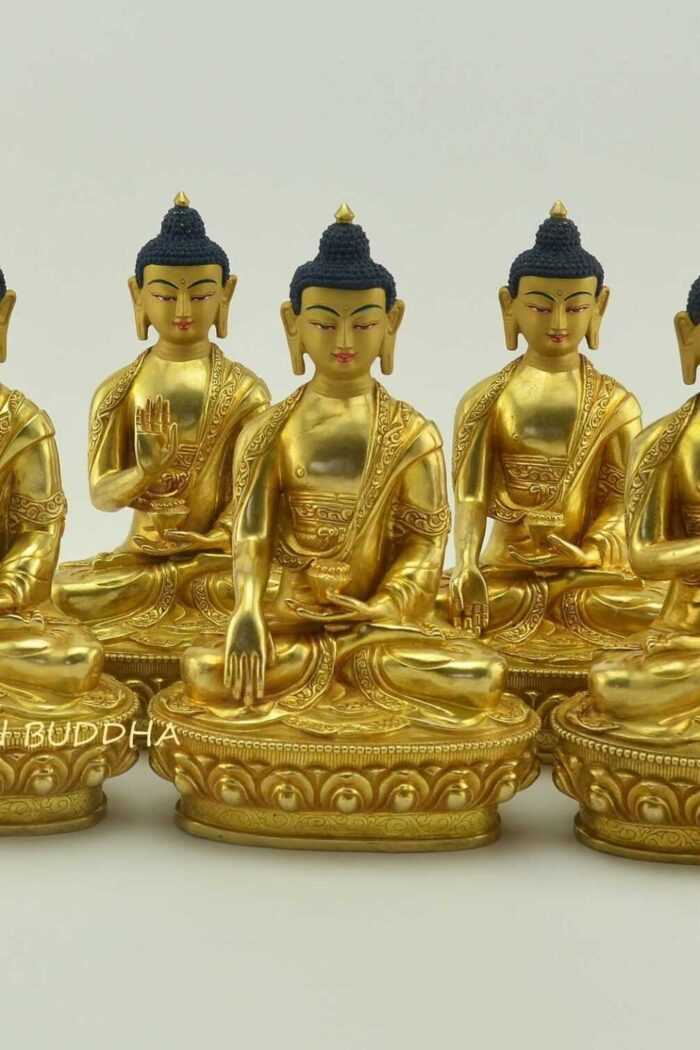Our set of Dhyani Buddhas represents the five core elements of Buddhist philosophy. The origin of the five Dhyani Buddhas is believed to the Primordial Buddha, also known as Adi Buddha. Indeed, for some the origin of the Dhyani Buddhas is uncertain. Nonetheless, they each have their own unequivocal meaning. Additionally, they are each associated with a virtue that is the result of purifying its corresponding negative emotion. Also, each Buddha represents a specific time in the life of the historical Buddha – Shakyamuni. Furthermore, they each have their own element, color, direction, ride a different animal and express their own mudras.
Descriptions of the Dhyani Buddhas
- Vairocana – is known as the “Great Illuminator” and his realm is the “Dharmadhatu” where all things exist in their ultimate true form. Buddha Vairocana uses the Dharmachakra mudra – also known as “turning the wheel of Dharma”. Additionally, his color is white which represents the pure consciousness of the primordial Buddha. It is believed that meditation on the color white can turn the poison of ignorance into the wisdom of reality.
- Ratnasambhava – is known as the “Jewel Born One” and his element is earth which embodies the aggregate of feeling. Buddha Ratnasambhava displays the Varada “Gift Giving” mudra as an expression of generosity. Additionally, Ratnasambhava is the Buddha of equanimity and his color is yellow. Meditation on the color yellow is believed to transform the delusion of pride into the wisdom of sameness.
- Amitabha – is the ruler of his western pure land Sukhavati. The mudra used by Amitabha Buddha is the Dhyani “meditation” mudra. Additionally, the wisdom of Amitabha Buddha is discriminating awareness, his element is fire and his color is red. Devotees believe that meditation on the color red can transmute the poison of attachment to the wisdom of discernment.
- Akshobhya – reigns over the Eastern Pure Land of Abhirati which means the “Land of Great Delight”. The Buddha Akshobhya is immutable and has mastered complete control over his passions. Akshobhya Buddha displays the Bhumisparsha “Earth Touching” mudra. Additionally, the color of Akshobhya is blue and he embodies the aggregate of rupa (form). Devotees believe that meditation on the color blue will transform anger into the wisdom of equanimity.
- Amoghasiddhi – encourages devotees to be fearless because they are under the protection of the Dharma teachings. As a result, he displays the Abhaya “protection” mudra. Amoghasiddhi embodies the aggregate of mental formations and his color is green. Additionally, his consort is the goddess of accomplishment – Green Tara. Indeed, Tibetan Buddhists believe that meditation on the color green can transmute the poison of jealousy into the wisdom of accomplishment.













pascal poirel (verified owner) –
242/5000
beautiful statues, exactly as in the photo, arrived very quickly, well packaged.
as usual Edwin, a big thank you for this perfect order and for the quality of your items.
Pascal, from France.
(a loyal customer)